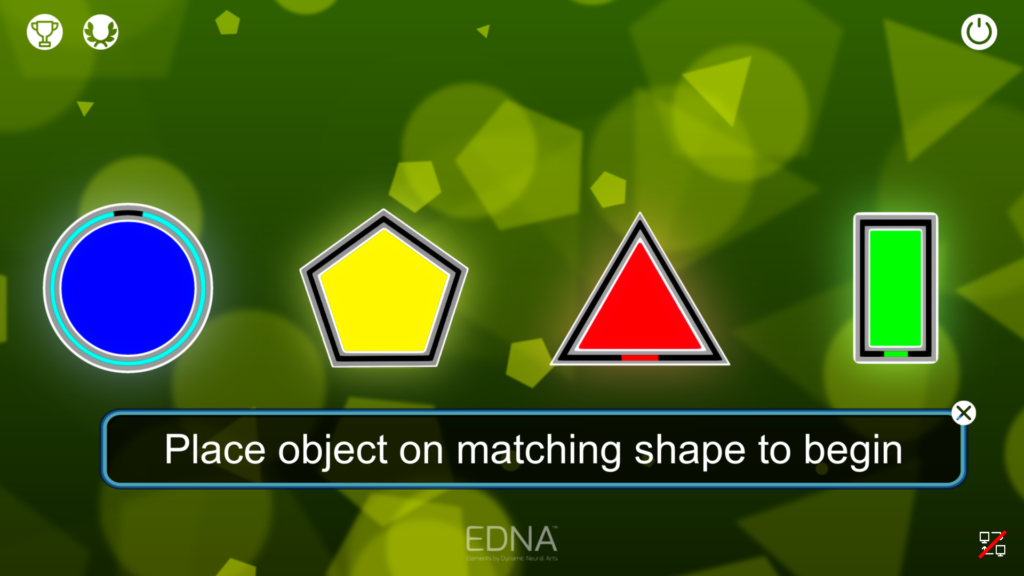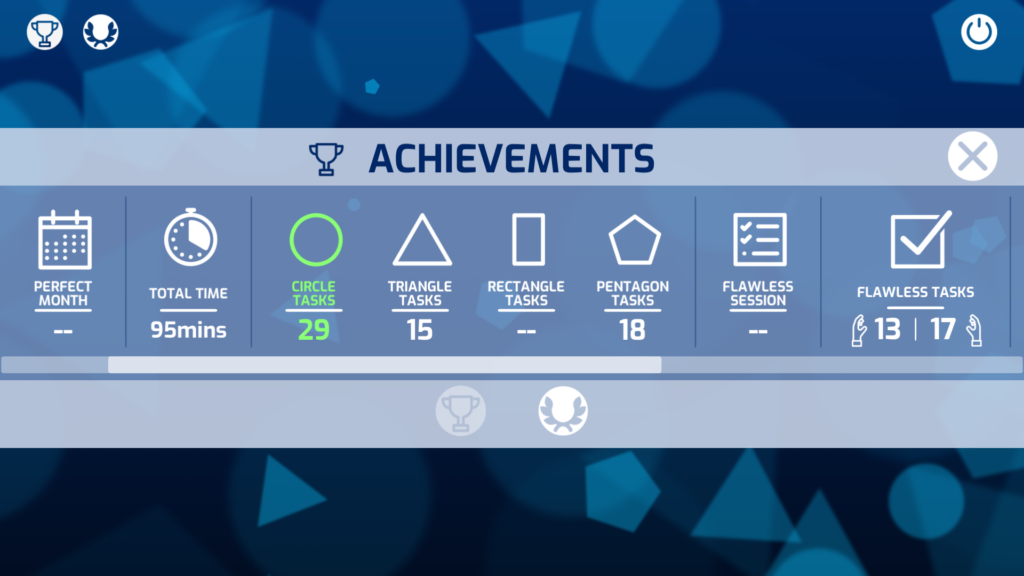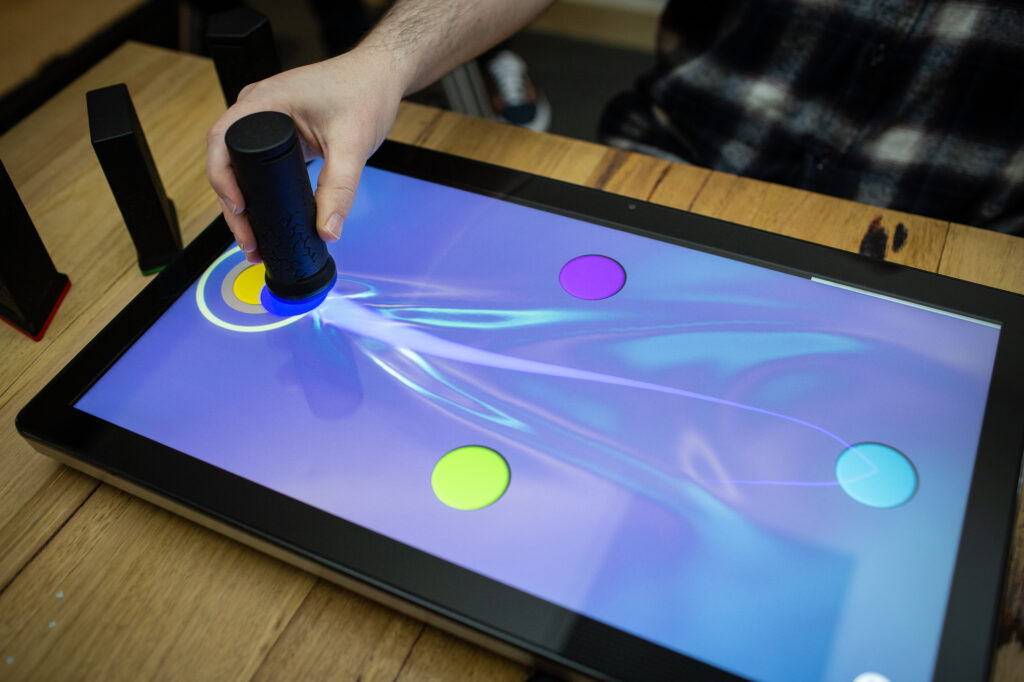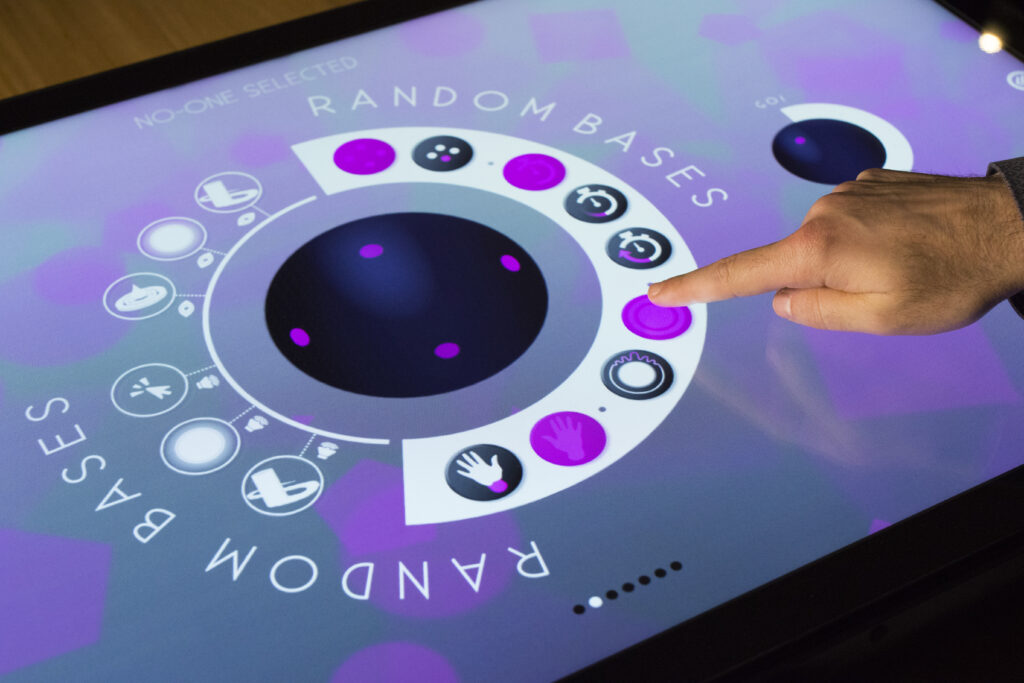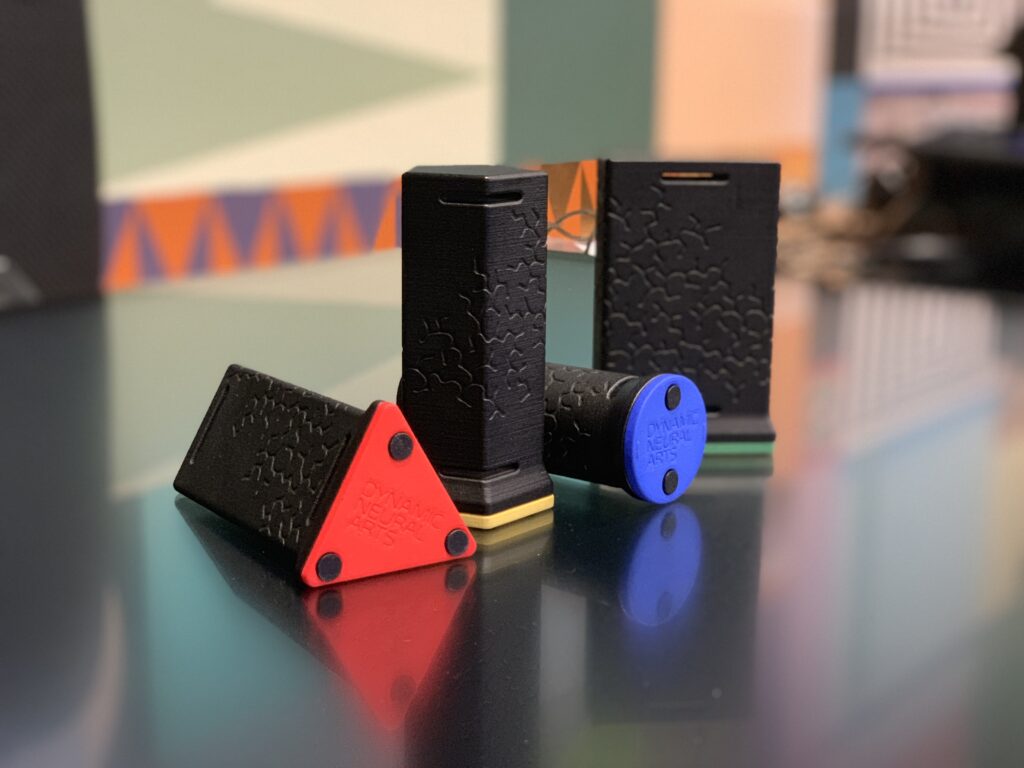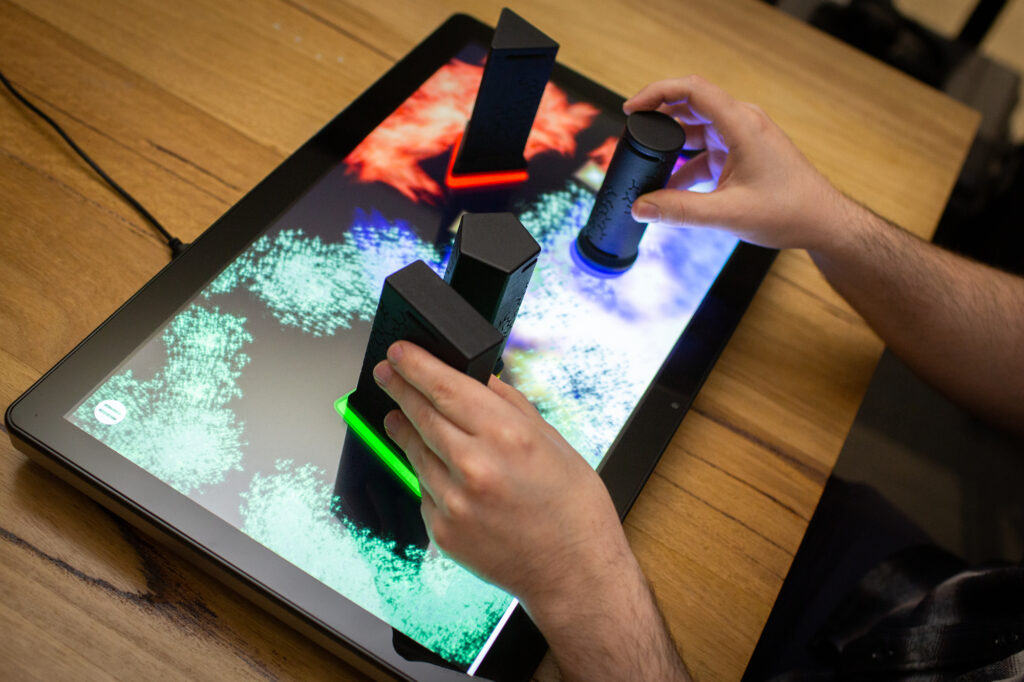EDNA
EDNA™ is an interactive software application designed for rehabilitation of individuals with an acquired brain injury. Brain injured patients frequently exhibit impaired upper-limb function including reduced range of motion and accuracy of reaching, and inability to grasp and lift objects or to perform fine motor movements. The EDNA device caters for this level of disability by providing patients with an intuitive tablet device and goal directed tasks that affords basic gestural control.
EDNA combines; a 22-inch tablet touch screen for take home use; engaging and intuitive software tasks; graspable user interfaces; and cloud-based data storage to enhance patient’s motor and cognitive skills. The software for patients comprises two sets of virtual task environment. The first are ‘goal-directed’ tasks whereby participants move tangible user interfaces (TUIs) to visually-cued locations, while receiving augmented feedback. The second set provide the patient with a suite of playful software applications for composing with sounds and visual feedback that promote artistic activity.
Performance data from EDNA is collected in the cloud allowing therapists to remotely review the data to monitor recovery. Customised therapy prescriptions can be delivered to EDNA in the home via the cloud to maintain patient engagement and ongoing rehabilitation.
The efficacy of the EDNA has been supported in clinical trials for adults with traumatic brain injury (Mumford et al., 2010; Mumford et al., 2012) and stroke (Rogers et al., 2019; Wilson et al., 2021) and in children with hemiparesis (Green & Wilson, 2012); our research has shown positive effects across skill acquisition, neuro-cognitive function, and everyday functional behaviour.
Links
Research Team
A/Prof Jonathan Duckworth – Artist, Designer
Professor Peter H. Wilson – Lead Psychologist
Development Team
- Ross Eldridge
- Andrew Batty (Lincoln Consulting Pty Ltd)
- William Owen
- Alexander Muscat
- Jeremy Tibb
- Andrew Clarke
- Dustin Bailey
Acknowledgements
Supported by RMIT through the Design and Creative Practice Enabling Capability Platform and the Australian Government, Department of Industry, Innovation and Science, Accelerating Commercialisation grant, an element of the Entrepreneurs’ Program.


